Attention-deficit/hyperactivity disorder (ADHD) is a neurodevelopmental disorder (meaning it is related to the way the brain and nervous system develop). According to the Centers for Disease Control and Prevention (CDC), it affects people’s ability to regulate their attention, impulses, and activity levels. In the U.S., ADHD is a very common condition that significantly impacts children and adults. In fact, per the CDC, approximately 6 million children aged 3 to 17 were diagnosed with ADHD as of 2024, representing around 9.8% of the population within that age group — and the prevalence was higher in boys than in girls.
While the American Academy of Pediatrics (AAP) recommends treating ADHD with a combination of behavior therapy and medication, the second has been the primary treatment option for managing ADHD symptoms. However, while opting for prescribed medication is not only perfectly fine but necessary for some people with this condition, it’s important to note that other effective approaches are also available. For instance, behavioral therapies, such as cognitive-behavioral therapy (CBT) and parent and teacher training programs, offer strategies to improve focus, impulse control, and social skills. Plus, these non-medicinal treatments can be especially valuable for individuals who either prefer non-pharmaceutical approaches or experience side effects from medications. This article explores these alternatives for treating ADHD. Yet, remember that the treatment choice should be made in consultation with medical professionals, considering factors like the severity of symptoms, personal preferences, and potential side effects.
ADHD symptoms, causes, and diagnosis

ADHD is characterized by various symptoms that can manifest in different ways. Due to the broad nature of ADHD symptoms, they are often categorized into inattentive, hyperactive-impulsive, and combined types (via the CDC). Inattentive ADHD is characterized by difficulty maintaining attention, organization, and following through on tasks. People who predominantly show these symptoms may seem forgetful and have trouble focusing on details. In contrast, hyperactive-impulsive ADHD is characterized by restlessness, impulsivity, and difficulty staying still or quiet. Such individuals might interrupt others frequently, act impulsively without considering consequences, and find it challenging to wait their turn. Lastly, as the name suggests, the combined type presents a combination of inattentive and hyperactive-impulsive symptoms.
While the causes of ADHD are largely unknown, genetics seem to play a significant role, as ADHD tends to run in families. Additionally, environmental factors like maternal smoking and drinking during pregnancy, premature birth, and exposure to lead may also contribute to the development of ADHD (via the CDC). Lastly, the CDC explains that since many ADHD symptoms are also present in other conditions (such as anxiety disorders or learning disabilities), diagnosing ADHD involves a comprehensive examination by qualified mental health professionals who gather information from multiple sources, such as parents, teachers, and the individual themselves, and they use the guidelines in the fifth edition of the American Psychiatric Association’s Diagnostic and Statistical Manual (DSM-5) to make a proper diagnosis.
Current treatment for ADHD
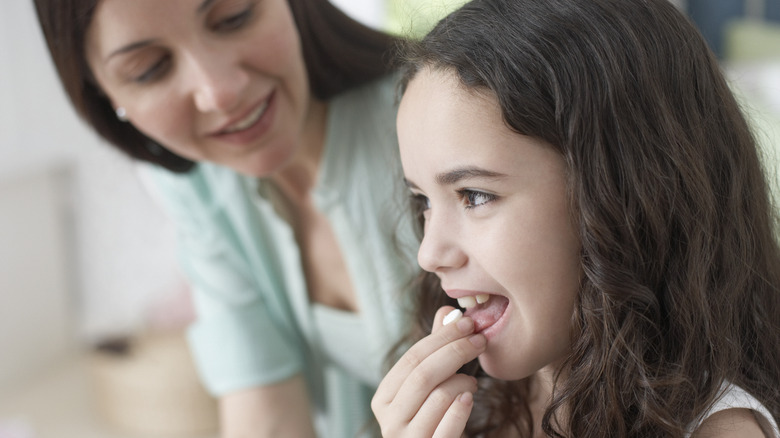
There are various treatment options available for ADHD, with the primary approaches being behavioral therapy and pharmacological or medicinal treatment. Ideally, combining both interventions offers the most comprehensive and tailored approach to managing ADHD symptoms (via the CDC). Behavioral therapy focuses on teaching people strategies to enhance attention, impulse control, and organizational skills, providing valuable tools for both children and adults with ADHD that would help them perform better at school or work and support healthier relationships with family and friends. This type of therapy encompasses cognitive behavioral therapy (CBT), parent training programs, and social skills training.
However, according to a study published in the Journal of Central Nervous System Disease, pharmacological treatment stands as the go-to line of approach for managing ADHD symptoms, and it includes stimulant and non-stimulant medications. Stimulants such as Ritalin, Concerta, Adderall, and Dextrostat are the most commonly prescribed drugs for ADHD. These medications enhance the availability of certain neurotransmitters in the brain, promoting improved focus and impulse control. In contrast, non-stimulant medications like atomoxetine, guanfacine, and clonidine are used when stimulants are not well-tolerated or ineffective. They work through different mechanisms to address ADHD symptoms. Nevertheless, per the study, while stimulant medications can be highly effective, they may also come with potential side effects, including appetite suppression, insomnia, and in some cases, a risk of abuse or dependence. This is why careful evaluation, regular monitoring, and dosage adjustments are crucial when using medications to treat ADHD.
Try cognitive behavioral therapy
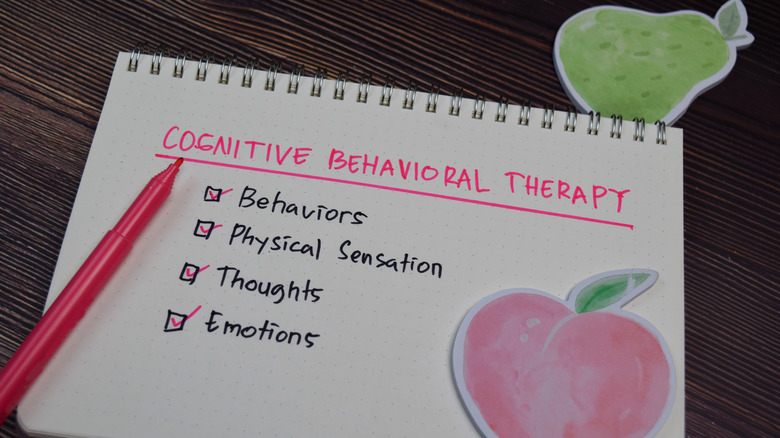
Bangoland/Shutterstock
As Psychology Today explains, cognitive behavioral therapy (CBT) is a therapeutic approach first developed by Aaron Beck in the 1960s to treat people with depression. It focuses on identifying negative thought patterns, behaviors, and emotional responses and switching them for positive or healthier ones to build new habits. In the context of treating ADHD, Children and Adults with Attention-Deficit/Hyperactivity Disorder (CHADD) explains that by teaching people with ADHD practical skills and strategies, CBT equips them with tools to navigate their daily lives more effectively, as it can foster a greater sense of control, boost self-esteem, and improve overall well-being. For example, CBT helps you learn better habits and skills to manage yourself when impulsiveness and distractibility get in the way, like getting things done and controlling your feelings. It can also help you handle your emotions and interactions with others.
Per PsychCentral, CBT for ADHD may involve several different techniques. First, successive approximation helps you tackle big tasks by breaking them down into smaller steps. Second, cognitive restructuring aims to identify and reframe negative thoughts that might contribute to procrastination or low self-esteem. Third, exposure therapy is a technique that helps with symptoms of anxiety. Fourth, guided discovery helps broaden your perspective on personal limiting beliefs to help you overcome them. And fifth, distractibility delay is a method that enables you to notice things that stop you from getting work done and gives you ways to deal with them.
Ask about neurofeedback
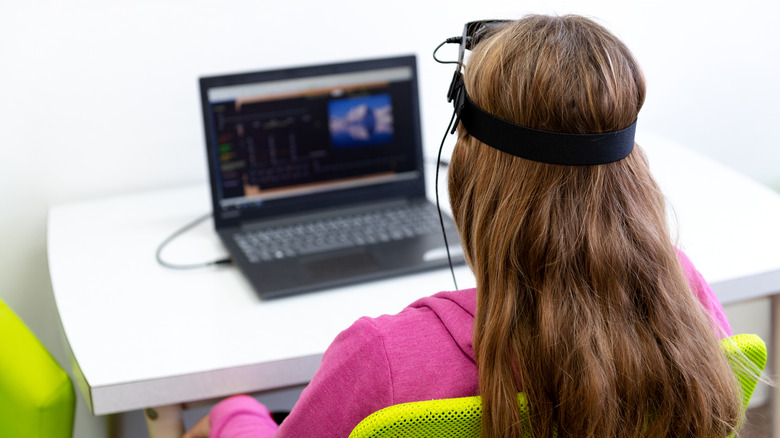
ABO PHOTOGRAPHY/Shutterstock
According to PsychCentral, neurofeedback (aka “brain training”) is an alternative therapy approach used to treat ADHD symptoms based on the idea that the brain’s activity can be monitored and controlled to improve focus, attention, and self-regulation. Per a review published in Current Psychiatry Reports, a neurofeedback session evaluates a person’s brain activity. First, brain activity is checked and prepared. Then, certain parts of the brain’s signals are chosen and measured as the person is doing tasks that require focus and attention. These selected signals are turned into prompts or feedback that the person can see or hear in real time. This helps the person know what their brain is doing. By getting feedback, the person can learn to control their brain activity and change how their brain works, which can affect how they think and act. Over time, the brain is believed to improve its ability to sustain attention and manage impulsivity.
However, research on the effectiveness of neurofeedback for treating ADHD has produced mixed results. Some studies suggest that neurofeedback can significantly improve attention and self-control, while others find more modest or inconsistent effects (via PsychCentral). It’s important to note that neurofeedback is considered an alternative therapy and is not yet widely endorsed as a primary treatment for ADHD. Lastly, per another review published in Cells, it is believed that there’s a better chance to improve how the brain changes and adapts in people with ADHD when combining neurofeedback with behavioral therapy rather than using brain stimulation alone.
Parents play an essential role

Maria Sbytova/Shutterstock
Parent programs for children with ADHD offer valuable guidance and strategies to navigate the challenges associated with the condition. According to Children and Adults with Attention-Deficit/Hyperactivity Disorder (CHADD), addressing a kid’s difficulties early on can positively impact preventing issues like struggles in school and social situations, which can lead to feelings of underachievement and low self-esteem. Thus, parents hold a significant role in shaping a child’s environment for success, and these programs can provide insights into creating supportive home and school settings that increase the chances of thriving for children with ADHD. In other words, parent programs empower you to actively participate in your child’s development.
These programs combine practical techniques and emotional support. For instance, they equip you with methods to establish clear expectations, directions, and boundaries for kids with ADHD who don’t perform well under ambiguous circumstances. Moreover, they teach you effective discipline systems to promote positive behaviors while helping your child learn from their mistakes when they have difficulties associating consequences with negative behaviors. In addition, parent programs also emphasize nurturing your child’s social skills, boosting their confidence, and identifying their strengths and interests to promote their sense of accomplishment. Overall, these programs strengthen the parent-child bond while providing the essential tools needed to navigate the unique challenges of raising a child with ADHD.
Get your teachers involved

Pixdeluxe/Getty Images
Teacher programs are crucial in supporting children with ADHD to excel in academic settings. They recognize that every student is unique. Thus, by implementing specific strategies in the classroom, educators ensure that children with ADHD are given a fair chance to learn effectively, participate actively, and thrive in the classroom environment. According to Children and Adults with Attention-Deficit/Hyperactivity Disorder (CHADD), effective academic instruction is key to their success. For instance, the site recommends maintaining a consistent routine throughout the lesson, seeing that when students with ADHD know what to expect and can follow a structured sequence, it reduces confusion and allows them to focus on the learning material rather than constantly figuring out what’s happening next. Beginning lessons with a quick review of what will be taught and the activities that will be used can provide a clear roadmap. Also, giving explicit instructions about the materials needed helps prevent students from feeling lost.
Furthermore, clearly explaining expected behavior during lessons sets a positive tone, and offering information about how long each activity will last helps them manage their time and attention. Since kids with ADHD have trouble focusing or staying seated, CHADD suggests breaking down assignments into smaller tasks or giving them small breaks between tasks, which reduces the feeling of overwhelm and supports their ability to complete tasks more successfully. Moreover, creating a visually clutter-free classroom environment minimizes distractions, helping students stay focused. Lastly, regular praise for good behavior builds their confidence and motivates positive actions, promoting a more supportive learning atmosphere.
Look for therapeutic recreational programs

Fatcamera/Getty Images
Intensive summer camp-like programs have emerged as an effective intervention for children with ADHD. According to a study published in Child and Adolescent Psychiatric Clinics of North America, the Summer Treatment Program (STP), developed in the early 1980s, demonstrates this approach. STP integrates evidence-based interventions within academic and recreational contexts and operates throughout the summer to provide a sustained and intensive treatment experience. This program effectively targets behaviors within settings where functional difficulties are more likely to occur.
STP uses various evidence-based strategies, including a reward and response cost point system, time-outs, antecedent control techniques like clear instructions and routines, and abundant praise for appropriate behavior. This approach is appealing because interventions are seamlessly integrated into typical childhood activities, creating a natural and engaging therapeutic environment. Moreover, the study shares that STP covers a broad range of strategies, targeting both academic and social outcomes, as well as sports skills and sportsmanship development. Importantly, STP has demonstrated a positive track record without identified adverse effects, making it a promising option for families seeking comprehensive interventions. Beyond treatment-specific camps, families can choose from various camps catering to multiple needs (via ADDITUDE). For example, social-skills camps promote friendship and personal growth, adventure camps foster decision-making skills and self-esteem, and classroom-based programs provide academic support.
Don’t forget to exercise
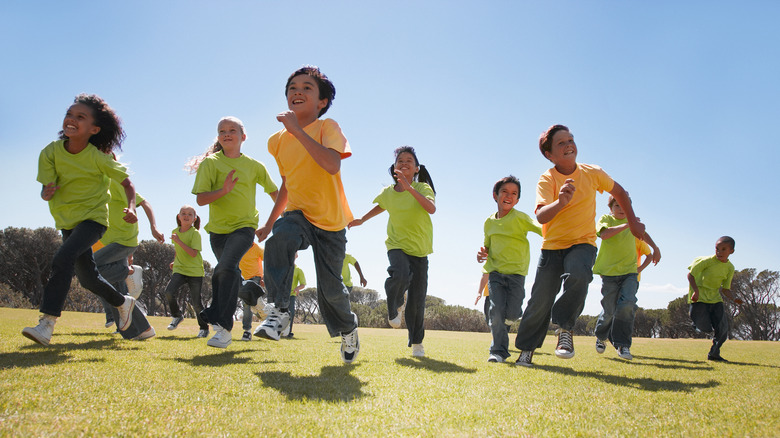
Martin Barraud/Getty Images
Exercise has become a possible and safe way to help with ADHD symptoms, especially in children. Many studies have examined how short bursts of active exercise, like running or playing sports, can help children with ADHD. For instance, one review published in Child: Care, Health, and Development found that exercise can make a positive difference in managing ADHD symptoms, including paying attention, being less hyperactive, and feeling less anxious. Similarly, a study published in Psychiatry Research found improvements in attention, executive functions, and motor skills. Because of this, people are considering using exercise as a different or extra way to help with ADHD.
According to another review published in The Journal of Neural Transmission, aside from helping the body, exercise also helps how the brain works. Different activities, such as aerobic ones like running (cardio) or calm ones like yoga (non-cardio), have been investigated for their short- and long-term effects on perceptual skills, intelligence, and academic performance. Per the review, exercise leads the body to release chemicals associated with pain relief, decreased depression, and reduced stress hormones. These mechanisms are believed to contribute to the improvements observed in ADHD symptom management. Per Healthline, some of the best types of exercise for kids with ADHD include biking, playing team sports like soccer or basketball, jumping rope, or hiking. As for adults with ADHD, the site lists martial arts, weightlifting, and joining a spinning or boxing class as safe and effective ways to manage ADHD symptoms.
Get more sleep
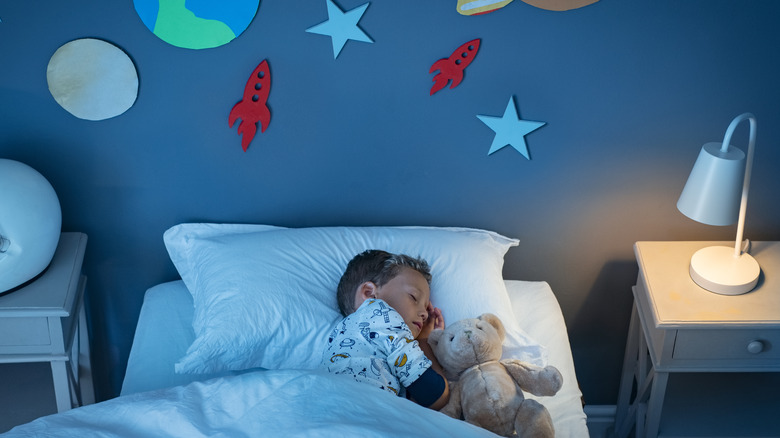
Ground Picture/Shutterstock
Sleep plays a significant role in managing ADHD symptoms, and addressing sleep problems can positively affect children with ADHD. According to a review published in the Journal of Clinical Sleep Medicine, insomnia (which includes difficulties in falling asleep and staying asleep) is commonly seen in up to 71% of kids with ADHD, in whom symptoms tend to be more severe, which affects their ability to sustain attention and process information. This suggests that sleep problems might actually contribute to making ADHD symptoms worse.
Per another review published in the Journal of the Canadian Academy of Child and Adolescent Psychiatry, kids and teenagers with ADHD often have trouble sleeping, either due to the ADHD itself or because of the medications they take. However, ensuring they get enough sleep and follow good sleep habits can make a big difference. Per the review, adopting good sleep hygiene could potentially lead to better management of ADHD symptoms. Some recommendations include setting a consistent bedtime routine with quiet and calming activities that the child enjoys, waking up at the same time every day, limiting the time spent in bed to only sleeping, and avoiding screens before bed. So, if you or a loved one has ADHD, getting more sleep might help with symptom management, enhance overall well-being, and help you better navigate the day.
Add more magnesium to your diet
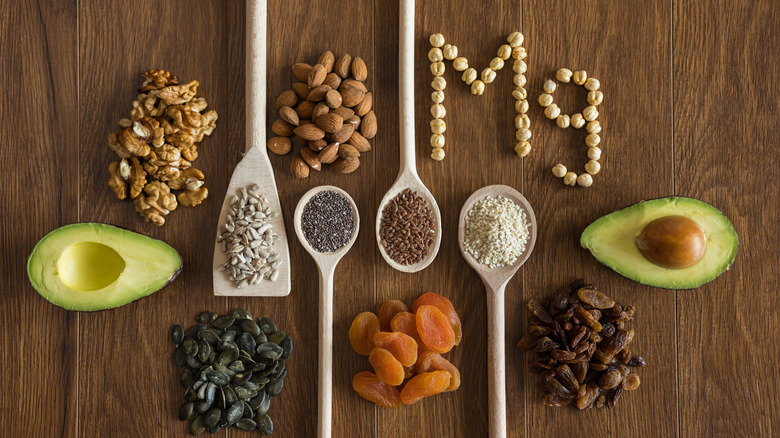
Bojanstory/Getty Images
Research has shown a link between magnesium deficiency and worsened ADHD symptoms, highlighting the potential benefits of magnesium supplementation in managing the condition. According to a 2024 review published in Nutrients, research has shown that children with ADHD tend to have lower blood magnesium levels than those without the condition, suggesting that magnesium might be valuable as a therapeutic approach for ADHD.
Furthermore, the review’s findings suggest that supplementing magnesium alone or combined with vitamins or other minerals can significantly improve ADHD symptoms. Plus, when used alongside standard treatments, magnesium supplementation has shown benefits in reducing inattention, hyperactivity, and impulsivity in children with ADHD. For example, a study involving 40 children with ADHD published in Magnesium Research examined the effects of an eight-week magnesium and vitamin B6 supplementation treatment and determined that it led to significant modifications to ADHD symptoms, namely reducing hyperactivity and emotional aggressiveness while improving school attention. In addition, the study noted that stopping treatment resulted in ADHD symptoms returning within a few weeks. Similarly, in another study published in the Egyptian Journal of Medical Human Genetics, magnesium supplementation improved the mental functioning of children with ADHD while reporting only minor side effects. Magnesium can be obtained from various dietary sources, including seeds, legumes, nuts (such as almonds, cashews, and peanuts), whole grain breads and cereals (like brown rice and millet), certain fruits, and green leafy vegetables (via the National Institutes of Health).
Make some adjustments to your diet

Monticello/Shutterstock
Adding healthy fats, whole foods, prebiotics, and probiotics to your diet while reducing your intake of sweets, salt, and fried foods can make all the difference when dealing with ADHD. Per a 2024 review published in Nutrients, healthy fats like omega-3 polyunsaturated fatty acids (PUFAs), which are essential for brain function, may improve total ADHD symptoms. Yet, studies have found lower levels in children and adolescents with the condition. Similarly, prebiotics and probiotics seem to help with psychiatric disorders, including ADHD, due to the relationship between gut health and ADHD symptoms.
Lastly, regarding dietary choices, the review explains that a junk-food dietary pattern rich in processed foods might increase the risk of ADHD and influence its symptoms, suggesting that minimizing the consumption of these foods as part of a healthy eating pattern could be beneficial. On that note, the Dietary Approaches to Stop Hypertension (DASH) diet, recognized as a healthy eating pattern, has demonstrated potential benefits for ADHD symptoms. This diet emphasizes consuming abundant whole foods such as fruits, vegetables, and low-fat dairy products while minimizing simple sugars. While research on the relationship between diet and ADHD is ongoing and sometimes inconsistent, the connection between specific nutrients, dietary patterns, and ADHD symptoms seems to provide an alternative treatment approach.
Try food-elimination diets

Kaspars Grinvalds/Shutterstock
Various elimination diets have gained attention as potential strategies to alleviate ADHD symptoms. Per a 2024 review published in Nutrients, these diets exclude certain foods to see if and how they affect ADHD symptoms. There are different types of elimination diets, including single-food exclusion diets, which eliminate one suspected food, multi-food exclusion diets, which remove common food allergens, and “few-foods diets,” such as the oligoantigenic diet, which is about eating only a few kinds of foods that are less commonly eaten and less likely to cause allergies.
In these diets, most foods are initially avoided for a set period, during which improvements in behavior or cognitive performance are often observed. Then, foods are slowly and cautiously reintroduced, one at a time. The process of systematically excluding and reintroducing foods aims to identify potential triggers for ADHD symptoms. Per the review, research has found that children following these diets experienced at least a 40% improvement in their behavior. Still, while elimination diets show promise in reducing ADHD symptoms for some individuals, further research is required to understand their mechanisms better and determine their applicability and long-term effects.
Other tips for managing ADHD at home
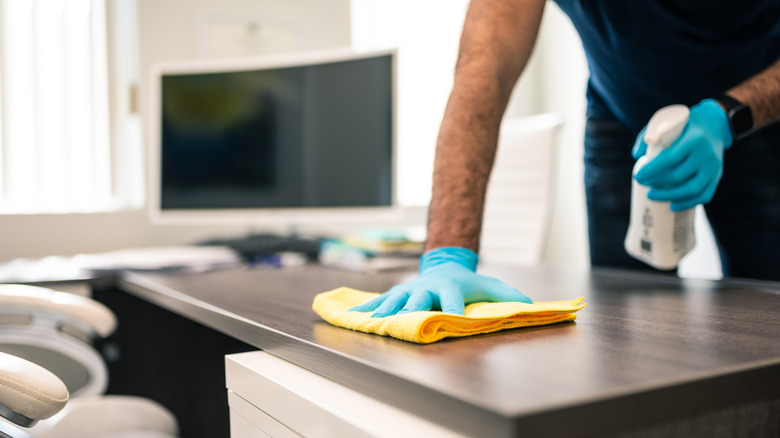
Warchi/Getty Images
Managing ADHD at home involves implementing strategies to enhance concentration, time management, and performance. According to Psychology Today, organizing your space, minimizing distractions, planning ahead, prioritizing tasks, and avoiding multitasking and procrastination can help get you through the day with less frustration and a rewarding sense of achievement. Creating an organized and clutter-free work or study environment can help. You can do this by designating specific places for your belongings and keeping surfaces clear to minimize visual distractions, which is crucial for maintaining focus. Other ways to create a distraction-free workspace include turning off unnecessary notifications on devices and considering noise-canceling headphones.
Additionally, planning and prioritizing tasks are essential to keeping you on track. This means you should start with the harder tasks first and avoid multitasking at all costs. Also, try to schedule time for each task, including breaks and leisure activities. Moreover, tools like to-do lists, planners, and digital apps for breaking tasks into smaller steps, setting realistic goals, and setting a timer for focused work intervals followed by short breaks can go a long way toward preventing burnout and maintaining productivity. Lastly, the site explains that to avoid procrastination (the action of delaying or postponing something), you should just get started with a tiny task, and that action will give you the push or motivation needed to keep going and get everything done. Ultimately, managing ADHD at home requires patience and experimentation to discover which strategies work best for you.



